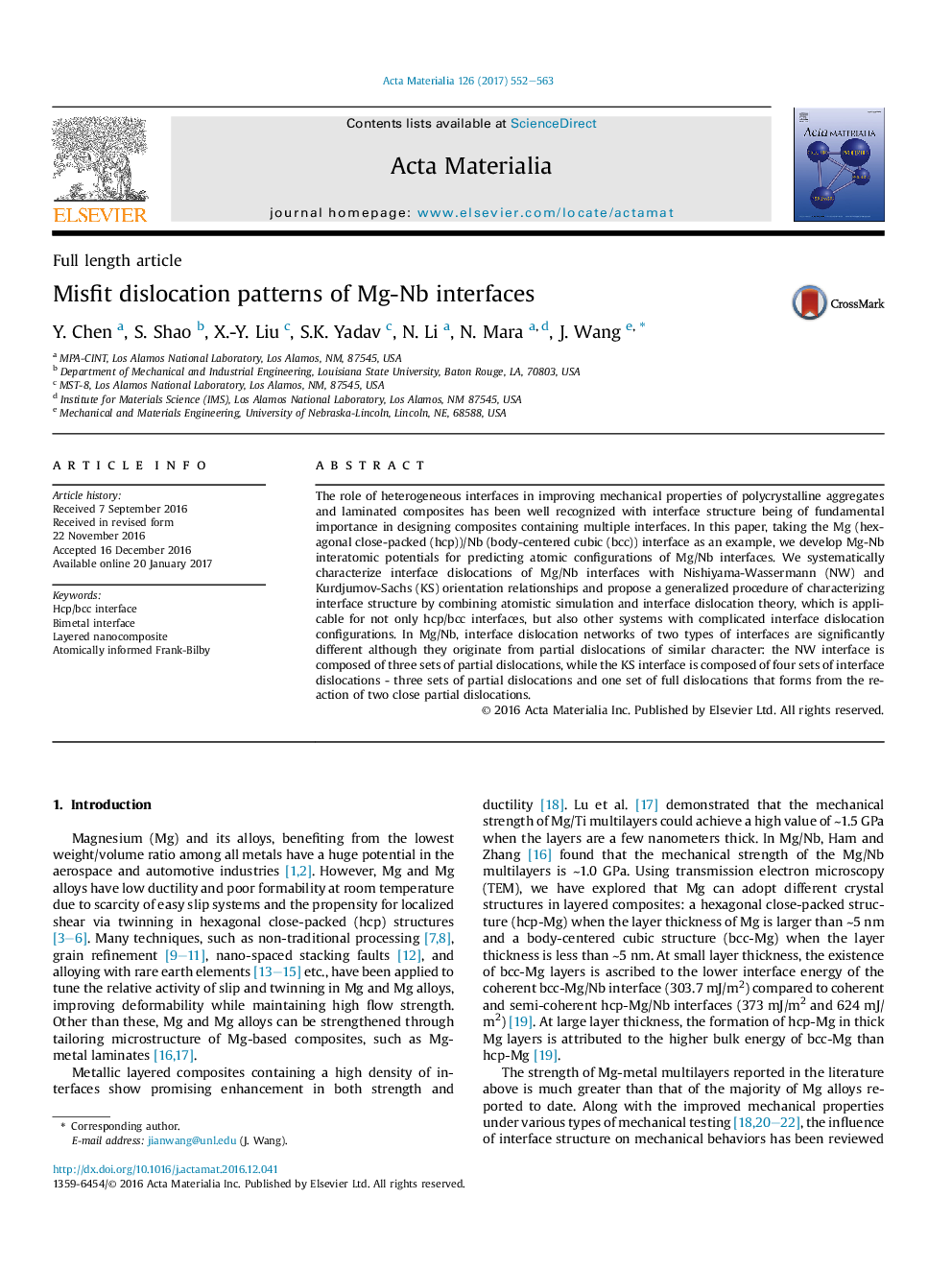| کد مقاله | کد نشریه | سال انتشار | مقاله انگلیسی | نسخه تمام متن |
|---|---|---|---|---|
| 5436409 | 1509550 | 2017 | 12 صفحه PDF | دانلود رایگان |

The role of heterogeneous interfaces in improving mechanical properties of polycrystalline aggregates and laminated composites has been well recognized with interface structure being of fundamental importance in designing composites containing multiple interfaces. In this paper, taking the Mg (hexagonal close-packed (hcp))/Nb (body-centered cubic (bcc)) interface as an example, we develop Mg-Nb interatomic potentials for predicting atomic configurations of Mg/Nb interfaces. We systematically characterize interface dislocations of Mg/Nb interfaces with Nishiyama-Wassermann (NW) and Kurdjumov-Sachs (KS) orientation relationships and propose a generalized procedure of characterizing interface structure by combining atomistic simulation and interface dislocation theory, which is applicable for not only hcp/bcc interfaces, but also other systems with complicated interface dislocation configurations. In Mg/Nb, interface dislocation networks of two types of interfaces are significantly different although they originate from partial dislocations of similar character: the NW interface is composed of three sets of partial dislocations, while the KS interface is composed of four sets of interface dislocations - three sets of partial dislocations and one set of full dislocations that forms from the reaction of two close partial dislocations.
Figure optionsDownload high-quality image (455 K)Download as PowerPoint slide
Journal: Acta Materialia - Volume 126, March 2017, Pages 552–563